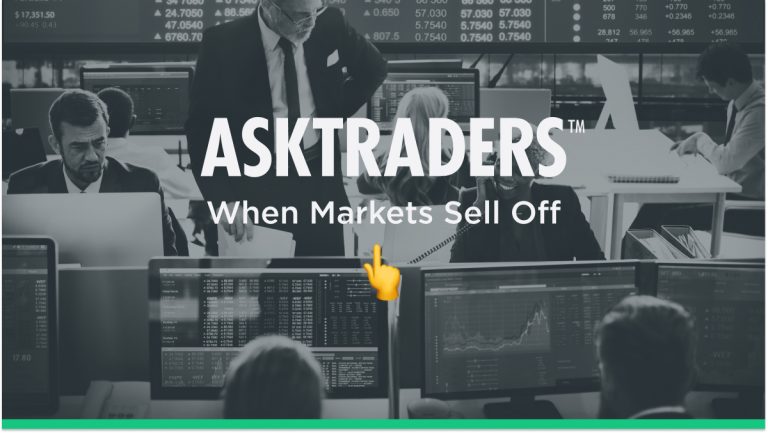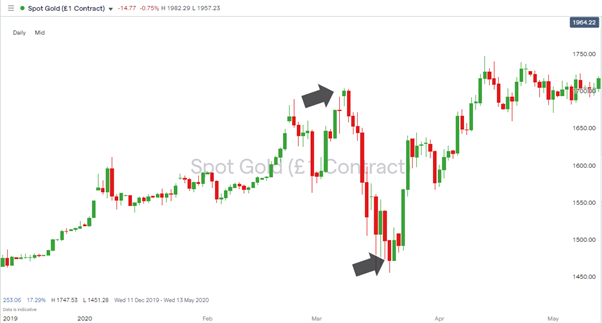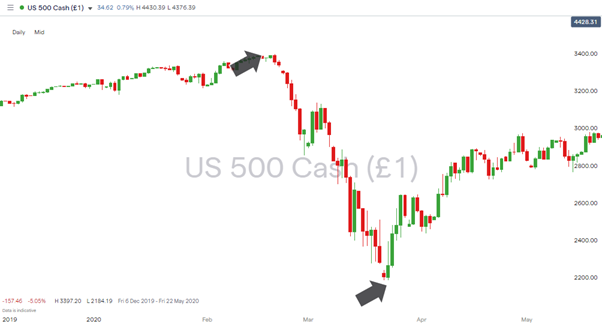
That fire-sale approach could be adopted for various reasons. It could be stock-specific, down to broader risk aversion, or even internal changes at a fund. Drawing on the knowledge of experienced traders we explore hedge funds during a markets sell off.
Identify Your Starting Position
Small and big investors both face the same dilemma when markets begin to sell off. The reaction of both will largely be driven by how much of their total capital is currently invested and how much is sitting on the side lines and available to buy the dips. In terms of institutional investors, it’s also possible to break them down into those who are trading with, and without leverage.
Hedge Funds During a Market Sell Off
Hedge funds originated out of a desire to generate market-neutral returns but as a group have moved into more market directional strategies. This isn’t because market-neutral strategies don’t work but is based on commercial fundamentals.
Attracting new investors to ‘alternative’ investments is difficult when their competitors such as cheap to buy ETFs cover the broad market and post double digit returns thanks to a rising tide lifting all ships.
Hedge fund managers might consider themselves the ‘smartest guys in the room’ and might make money in a wide variety of market conditions, but their fees are high, and returns can be held back due to the hedging of risk that they carry out. One way to get around this problem can be to skew strategies to be directional (unhedged) and use leverage.
Hedge Funds and Leverage
The classic market-neutral Long-Short strategy where two similar assets are simultaneously bought and sold is designed to generate a return even if the broader market goes up or down 10%. The short and long positions net each other off in terms of market direction, but the relative outperformance of one of the assets hopefully comes good. Two good examples would be Long-Short BP and Shell, or Ford vs General Motors.
Strategies like Long-Short equities might make only a modest return in percentage terms, Ford might only outperform GM by 1%. Scaling up on position size using leverage is often used to raise the stakes and improve total cash returns. With margin rates as low as 5% available to hedge funds they’re able to take on leverage up to 1:20 levels. This helps boost cash returns but does open the door to the temptation to use leverage on unhedged positions.
When Using Leverage Backfires
Retail investors who use leveraged CFDs to trade the markets will be able to testify how quickly a market sell off can eat into trading profits. The same principles are at work at hedge funds which borrow to increase the size of their trades. Losses, as well as gains, are magnified, and as with retail investors that can lead to panic selling.
Liquidity & ATMs
Whilst the painful experience of being highly leveraged going into a market crash is similar for retail investors and hedge funds there is an added layer of complexity facing the hedge fund managers.
Individual investors typically operate one account and have a day job so can simply sell out and wait to fight another day. Following the guidance to only ever trade using funds which can afford to be lost helps keep the emotion out of their trading. Hedge funds in contrast can be complex organisations with a lot of interrelated parts and taking book size to zero would lead to any manager looking for a new job.
If the fund works on a ‘fund of funds’ basis and has different managers running different strategies, then the total capital will be allocated to asset groups which have wide-ranging degrees of liquidity. During a sell off, the priority for the fund’s senior management can switch from trading performance to ensuring there is enough cash flow to keep the operation viable.
Any desire to resist panic selling and drive prices down even further has to be weighed against the need for hedge funds to meet margin calls. Even profitable positions managed by successful traders might be sold in an attempt to shore up the balance sheet and meet financing demands associated with illiquid positions.
Case Study – Gold
During the market crashes of 2008 and 2020, the phrase used to describe selling activity in some markets was that they were being used “like an ATM”. With margin calls needing to be met daily the first positions to be sold were the most liquid ones.
The priority for fund managers switched from picking and holding good bets so staying in the game. This liquidity crisis is typically seen in the latter stages of a market sell off and can be a time of dramatic price falls. It can also mark the moment of price capitulation, when selling activity peaks just before a market rebound.
During the Covid created crash of March 2020 the price of gold fell by 13.4% in the space of 11 days. This surprised many market analysts because gold has historically been associated with price rises during a crisis thanks to its role as an asset of last resort.
The conclusion which was drawn was that regardless of how attractive gold might be to investors, large funds holding a portfolio of more illiquid assets sold what they could, including gold positions. This enabled them to finance positions which could not be sold but challenges the idea that markets are logical or efficient.
Gold – Daily Price Chart – December 2019 – May 2020 – Gold bottoms out on Friday 20th

Source: IG
The reversal in gold’s fortunes came on Friday 20th March 2020 when the metal posted only its third up day (green candle) over a period of ten trading sessions. This was followed by a price surge and interestingly the rebound in the gold market preceded the stock market rally which didn’t start until Monday 23rd March 2020.
Gold isn’t typically seen as a leading indicator for stock movements, but in this instance the end of ATM style selling pressure in the precious metals market appears to have signified that the market had overshot to the downside. The bottom in the gold market was a time when ‘sell everything’ ended and the time to buy back into risk-on assets like stocks had arrived.
S&P 500 – Daily Price Chart – December 2019 – May 2020 – Equities bottom out on Monday 23rd

Source: IG
Not Leveraged Institutional Investors – Pension Funds
Private and government pension funds are estimated to own up to 20% percent of U.S. stocks. When the retirement accounts of individuals are factored in then approximately 37% of US stock ownership can be attributed to investment managers who are seeking long-term returns.
Speculative traders and hedge funds might make abnormal returns, but a large percentage of the stock market is made up by investors with a slow-and-steady approach. Their approach to market correction can therefore determine the nature and duration of a sell-off.
Diamond Hands
Buy-and-hold investors running long-term investment strategies tend to take a different view to hedge funds when markets crash. As they aren’t focussing on short-term gains, they may well take the approach of weathering the storm. Selling out of positions in a hope to buy back at lower levels is an obvious temptation but the investment mandates of some funds stipulate the kind of trading activity they can (and can’t) carry out.
Stock Rotation
One trend to look out for is that pension and investment funds may be required to hold positions in a particular sector, such as renewable energy. Alternatively, they might be required to allocate a certain percentage of their capital to a particular asset class such as equities. This might limit their options and make it impossible for them to bail out of positions, but they could still respond to a market meltdown by rotating from one type of equity position to another.
Working on the assumption that a market correction is a sign of a change in the investment environment, pension funds might decide to adjust the weighting of their investments. If market sentiment has shifted to bearish then a long-term program of selling growth stocks and buying defensive stocks could be triggered by a short-term correction.
Daily Trading Volumes
Price moves in different stocks can also be influenced by how easy it is for large funds to trade out of positions. Even during calmer moments in the market, institutional investment firms which hold a position close in size to the normal total daily trading volume will need a considerable amount of time to sell out of it. During a price crash, that problem is exacerbated and causes a vicious circle of downwards price moves.
When big funds are forced out of positions in illiquid stocks the price can overshoot to the downside. Spotting which market to buy the dip in can be helped by looking at the core statistics of different stocks. Apple Inc for example has a market capitalisation approximately four times that of Tesla Inc, but the daily trading volumes in TSLA is typically two or three times that of AAPL.
Final Thoughts
The natural direction of the stock markets may be upwards but sell offs are pretty much guaranteed. The difficulty is spotting them in advance and using these ways of understanding the nature of sell offs, and how to react to them.
If a fund had been fully leveraged going into a correction, then a fall in the value of their holdings will have to be countered by reducing the position size, or finding cash to finance their account, or quite often both.
Considering how the big players in the market make their decisions can help retail investors navigate market events. The dash to liquidity seen in some instances can result in prices momentarily moving too far to the downside. Whilst that’s bad news for shareholders it also presents opportunities to buy in at unbelievably low prices.
Navigate to one of these trusted brokers to ensure you get your trading off to the best possible start. It takes minutes to open up an account with a well-regulated broker and prepare to step into any sell off at the right time.
